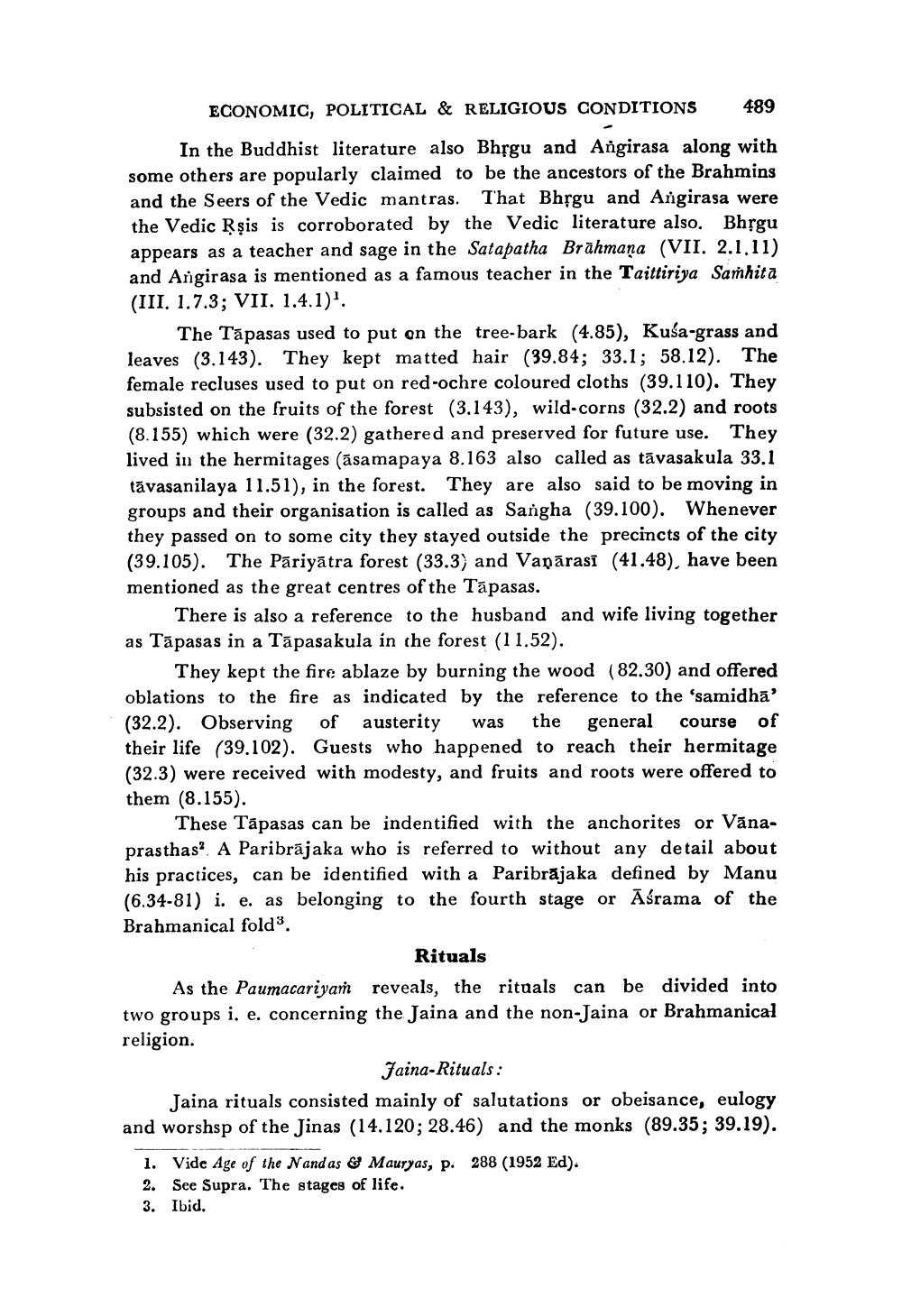________________
ECONOMIC, POLITICAL & RELIGIOUS CONDITIONS
489
40
In the Buddhist literature also Bhsgu and Angirasa along with some others are popularly claimed to be the ancestors of the Brahmins and the Seers of the Vedic mantras. That Bhrgu and Angirasa were the Vedic Rşis is corroborated by the Vedic literature also. Bhrgu appears as a teacher and sage in the Satapatha Brāhmana (VII. 2.1.11) and Angirasa is mentioned as a famous teacher in the Taittiriya Samhita (III. 1.7.3; VII. 1.4.1)'.
The Tāpasas used to put on the tree-bark (4.85), Kuća-grass and leaves (3.143). They kept matted hair (39.84; 33.1; 58.12). The female recluses used to put on red-ochre coloured cloths (39.110). They subsisted on the fruits of the forest (3.143), wild-corns (32.2) and roots (8.155) which were (32.2) gathered and preserved for future use. They lived in the hermitages (āsamapaya 8.163 also called as tāvasakula 33.1 tāvasanilaya 11.51), in the forest. They are also said to be moving in groups and their organisation is called as Sangha (39.100). Whenever they passed on to some city they stayed outside the precincts of the city (39.105). The Pāriyātra forest (33.3) and Vaņārasi (41.48), have been mentioned as the great centres of the Tāpasas.
There is also a reference to the husband and wife living together as Tapasas in a Tāpasakula in the forest (11.52).
They kept the fire ablaze by burning the wood (82.30) and offered oblations to the fire as indicated by the reference to the 'samidha' (32.2). Observing of austerity was the general course of their life (39.102). Guests who happened to reach their hermitage (32.3) were received with modesty, and fruits and roots were offered to them (8.155).
These Tāpasas can be indentified with the anchorites or Vanaprasthas”. A Paribrājaka who is referred to without any detail about his practices, can be identified with a Paribrājaka defined by Manu (6.34-81) i. e. as belonging to the fourth stage or Aśrama of the Brahmanical fold.
Rituals As the Paumacariyaṁ reveals, the rituals can be divided into two groups i. e. concerning the Jaina and the non-Jaina or Brahmanical religion.
Faina-Rituals: Jaina rituals consisted mainly of salutations or obeisance, eulogy and worshsp of the Jinas (14.120; 28.46) and the monks (89.35; 39.19).
1. Vide Age of the Nandas & Mauryas, p. 288 (1952 Ed). 2. See Supra. The stages of life. 3. Ibid.




